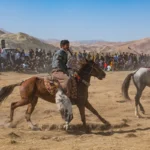
Pencak Silat, a martial art deeply rooted in the Southeast Asian region, is a tapestry of culture, tradition, and combat techniques. In this exploration, we delve into 25 historical facts and numerical trivia that unveil the rich and diverse world of Pencak Silat. From its historical origins and cultural significance to its evolution as a competitive sport and recognition by international bodies, Pencak Silat is not only a physical practice but a testament to the heritage, adaptability, and enduring legacy of the Southeast Asian communities it represents.
Origin: Pencak Silat’s origin can be traced back to the Indonesian archipelago. Its historical roots are embedded in the various martial traditions of the region. The art evolved organically as communities developed their unique fighting techniques, and over time, these traditions blended to form what we now know as Pencak Silat. Its ancient origins are a testament to its deep connection with Southeast Asian history.
Cultural Significance: Pencak Silat is not merely a physical practice; it’s a cultural treasure of Southeast Asia. It serves as a means of preserving and passing down traditional values, customs, and the rich heritage of the region. Beyond combat skills, it embodies the essence of the cultures from which it emerged.
Diverse Forms: The diversity of Pencak Silat styles reflects the complex tapestry of Southeast Asia. Each style is a unique expression of the region’s rich cultural diversity, with practitioners mastering an array of techniques and forms, making Pencak Silat a multifaceted martial art.
Competitive Sport: The transition from traditional art to a competitive sport signifies Pencak Silat’s adaptability. It offers practitioners and athletes a platform to showcase their skills in a regulated and competitive environment, combining the beauty of martial art with the thrill of sports competition.
SEA Games: Its inclusion in the Southeast Asian Games emphasizes the regional importance of Pencak Silat. Athletes from participating countries aim for glory, contributing to the cultural exchange and regional camaraderie within the games.
Olympic Recognition: While not part of the Olympics as of my last update in September 2021, Pencak Silat’s pursuit of Olympic recognition underlines its global ambitions, with proponents advocating for its inclusion in the world’s most prestigious sporting event.
Silat Techniques: Pencak Silat encompasses a vast array of techniques, reflecting its comprehensive approach to self-defense. It teaches practitioners not only to defend themselves but also to honor the traditions that shaped these techniques.
Music Accompaniment: The rhythmic sounds and music that accompany Pencak Silat performances provide a sensory experience that elevates it from a mere martial art to an artistic and cultural spectacle. The music adds an auditory dimension to the visual mastery of the martial forms.
Traditional Weapons: The incorporation of traditional weapons underscores Pencak Silat’s historical relevance in the defense of Southeast Asian communities. The use of weapons like keris and kujang highlights the martial art’s adaptability to various combat scenarios.
Martial and Cultural Education: Pencak Silat serves as a gateway to cultural education, instilling in its practitioners a deep appreciation for tradition, discipline, and respect. Beyond self-defense, it imparts a holistic understanding of the culture it represents, shaping not just martial artists but also responsible individuals who embody the values of their communities.
Grandmasters: Grandmasters are the revered figures in Pencak Silat. Their exceptional knowledge and expertise are often the result of a lifelong commitment to the art. Grandmasters are instrumental in preserving the tradition and passing down their wisdom to the next generation of practitioners.
Self-Defense: Pencak Silat’s practical applications make it an ideal self-defense system. The techniques learned can be invaluable in real-life situations, equipping individuals with the skills to protect themselves when needed. It goes beyond a sport or martial art; it’s a tool for personal safety.
Historical Context: Pencak Silat carries a deep historical context, intertwined with the struggle for independence in Indonesia and resistance against colonial powers. It was often used in the fight for freedom, making it a symbol of national pride and resistance.
International Competitions: Pencak Silat’s global presence is exemplified through international competitions. Athletes from diverse backgrounds come together to showcase their skills on the world stage, fostering cultural exchange and international camaraderie.
Belt System: The implementation of a belt system, much like in traditional martial arts, adds structure to the progression of Pencak Silat practitioners. It helps individuals gauge their proficiency and provides a sense of accomplishment as they advance through the ranks.
Silat Masters: Legendary silat masters, often known as “Pendekar,” possess an almost mythical status in the Pencak Silat community. Their exceptional skills, knowledge, and dedication to the art make them iconic figures who inspire and guide the next generation.
Pencak and Silat: The distinction between “pencak” and “silat” underscores the art’s multifaceted nature. “Pencak” represents the performance aspect, with a focus on choreographed movements, while “silat” pertains to the self-defense techniques and combat applications.
Animal Styles: The incorporation of animal movements and behaviors into Pencak Silat styles adds a unique dimension. Practitioners draw inspiration from animals like tigers, eagles, or snakes, infusing their movements with grace, power, and adaptability.
Women in Pencak Silat: The involvement of women in Pencak Silat is a significant aspect of the art’s evolution. The inclusion of female-only competitions and events promotes gender equality and empowers women to excel in this traditionally male-dominated domain.
Weight Categories: The introduction of weight categories in Pencak Silat competitions emphasizes fairness and safety for athletes. By dividing competitors into specific weight classes, it ensures balanced and competitive matches, contributing to the integrity of the sport.
Height and Reach: A practitioner’s height and reach in Pencak Silat can significantly influence their fighting style and strategy. Taller individuals might leverage their reach advantage for long-range strikes, while shorter individuals may focus on agility and close-quarters combat. Understanding how one’s physical attributes come into play is a crucial element in the art.
Silat in Pop Culture: Pencak Silat’s popularity has transcended martial arts dojos and competitions, finding its way into popular culture. Notable appearances in films like “The Raid” and “Merantau” have showcased the art’s dynamic and breathtaking techniques, introducing it to a global audience.
UNESCO Recognition: Pencak Silat’s inclusion in UNESCO’s Representative List of the Intangible Cultural Heritage of Humanity in 2019 is a testament to its cultural significance. This recognition highlights the art’s role in preserving the intangible heritage of the Southeast Asian region, including its rich traditions, values, and customs.
Evolving Rules: Pencak Silat continues to adapt and grow, and its rules and regulations evolve accordingly. International organizations like the International Pencak Silat Federation (PERSILAT) play a pivotal role in standardizing the sport and ensuring that it remains relevant and competitive in the contemporary world while retaining its traditional essence.
Community and Legacy: Beyond its martial aspects, Pencak Silat serves as a community that fosters lifelong bonds and a shared legacy. Practitioners and enthusiasts form a global network that celebrates the art’s history and future, preserving a tradition that has spanned generations.









